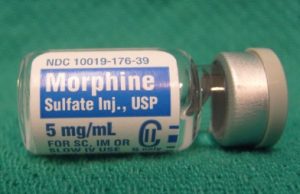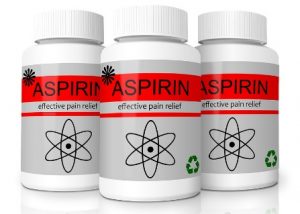Close to 25 percent of Americans have experienced low back pain in the last 3 months, which makes it one of the most common types of pain and most frequent reason for disability in adults.
Neck traction devices and inversion tables might be helpful when at home or at your physical therapist, but you cannot carry them with you to the store, while commuting to work, or even to your child’s little league game. A more internal remedy such as pain medication may be required all those other times or perhaps even during those times.
Medications for back pain are of multiple types and categories; depending on the severity of the symptoms, the length of time you have had them, the location, the type of pain you are experiencing, and the side effects that you are able to tolerate. Finding the best pain relief medication for back pain can be hard. Worst of all, what might work great for another person might not necessarily work for you.
Pain medication is unlikely to heal a back injury, however it relieves pain and opens a window for other treatments including physical therapy to have a shot at working. You might have to consult your doctor first and try several different pain medications before you find one that works best for you. Luckily, it is possible to narrow down the list of potential medications if you have a basic understanding of various options commonly used to treat back pain and the popular options for each drug class.
Medications for Relieving Back Pain

* Non-Steroidal Anti-Inflammatory Drugs (NSAIDs):
NSAIDs are some of the oldest forms of pain medication. The drugs are most effective when it comes to the treatment of pain affecting the muscles or bones, which makes them effective for back pain relief. Non-Steroidal Anti-Inflammatory Drugs provide an additional anti-inflammatory component lacking in acetaminophen. The medications are not addictive and help reduce inflammation and fever as well as pain, which makes them a great option for various pain issues such as lower back pain. However, NSAIDs are not recommended for those with a history of heart/stroke problems (except for aspirin), gastro-intestinal problems, or ulcers.
The 2 commonest types are Aspirin and Ibuprofen and are also widely available without the need for prescription and are effective in treating back pain. However, some NSAIDs are prescription-only including diclofenac (Voltaren), celecoxib (Celebrex), nabumetone (Relafen), meloxicam (Mobic).
* Acetaminophen:
Acetaminophen is a mild analgesic that can be taken as an oral, suppository, or intravenous medication. Acetaminophen is commonly sold as Tylenol and is more suited to the treatment of fever, but provides affordable but temporary relief from mild to moderate back pain.
Acetaminophen is easily accessible, cheap, safe in recommended dosages, and effective for most users. It has only a handful of side effects. One major concern if used consistently in doses greater than 4,000 milligrams a day is that it can lead to liver toxicity. Most forms of acetaminophen can be accessed over the counter, but some varieties are prescription only.
The key difference between NSAIDs and acetaminophen is the lack of anti-inflammatory effects. It is due to this reason that both classes are used in combination for treating persons recovering from surgery. It is also combined with caffeine or opiates sometimes to help in the treatment of specific ailments
* Muscle Relaxants:
Muscle spasms can be a factor in back pain in many instances. Muscle relaxants can be quite beneficial when it comes to acute injuries such as straining the back when playing basketball. The medications are usually directed at muscles as opposed to the central nervous system in its entirety. Some of the commonly prescribed muscle relaxants include cyclobenzaprine (Flexeril) and carisoprodol (Soma, Vanadom). Drowsiness is the most common side effect and the medications have been shown to be substantially beneficial within just a few days of use. The medications carry a risk of habit formation, which means that they should only be used under the close supervision of a physician.
* Opioids:

Opioids range from morphine to Vicodin. Opioids like OxyContin are highly controlled since they are highly addictive. Norco is a good example of opioid medications that blend and opioid with an analgesic. Tramadol is a milder form of opioid that can be used if you are not comfortable using narcotics.
Caution is genuinely warranted. Long-term use of opioids has actually been shown to worse back pain. Data is now emerging showing that using the medications for extended periods at sufficiently high doses can alter the nervous system that you start perceiving pain more.
* Steroids:
Steroids are among the most powerful anti-inflammatory drugs and have the option of being taken either via injection or orally for back pain relief. Injections can reduce some of the side effects associated with the use of steroids. While steroids are generally safe when taken for short periods, complications and side effects can occur if they are taken for more than 2 weeks. The consensus according to the medical community is that only a maximum of 3 injections a year are safe.
Side effects of steroid use include reduced production of the hormone cortisol, which can lead to additional infections, swelling, and weight gain. Other complications include osteoporosis and high levels of blood sugar in diabetics.
* Anesthetics:
The medications block an affected nerve surrounding the spinal cord to provide back pain relief. OTC creams can be used for anesthetizing the area or local anesthetics including procaine hydrochloride (Novocaine) and lidocaine may be administered.
* Adjuvant Medications:
Adjuvant medications are the medications generally not prescribed for pain relief but which are sometimes prescribed in combination with others for treating back pain. For back problems, adjuvant medications are typically prescribed for pain related to the nerves. Adjuvant medications include anticonvulsants and antidepressants.
Antidepressants might be thought of as a joke revolving around how depressing sore backs can be, but some do actually contain properties that help reduce back pain. Some of the older categories of antidepressants can be beneficial when it comes to controlling pain, especially tricyclic antidepressants. The pain relief properties of the medications are such that they are able to provide pain relief in doses lower than those required for treating depression. One of the most frequently used antidepressant for chronic pain in Duloxetine (AKA Cymbalta).
Bottom-Line
It is important to remember that any drug can interact with a different drug that you are taking or even with a vitamin or any other type of supplement. You should always consult your doctor before you start taking any new medications for treating back pain and always follow the prescription orders by the doctor for taking the medications. Irrespective of the medications you take for back pain, you should never make them your only mode of relief.
I’m Lucas. I used to be a back pain sufferer, but I’ve recovered. I created BestforBackPain.com to help others find relief without going to physical therapy or expensive medication.





